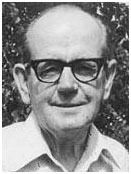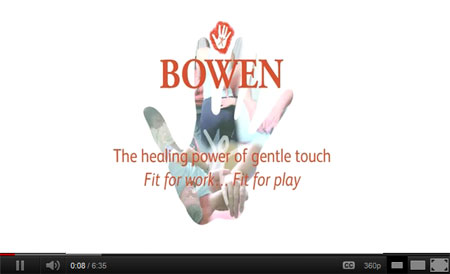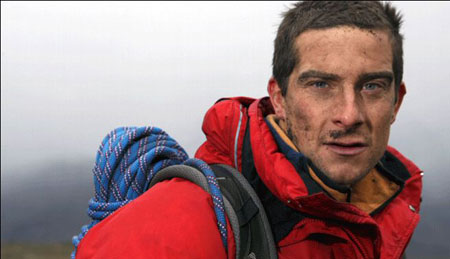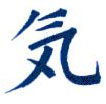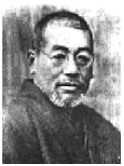The Bowen Technique is a gentle, but wonderfully effective, remedial therapy. It is a series of gentle moves or rolls over soft tissue encouraging, among other things, the stimulation of blood and lymph circulation. This establishes crucial neural communication, opening energy pathways and relaxing muscles, enabling the body to naturally realign and re balance from cellular level upwards.Bowen Therapy is a non-invasive therapeutic bodywork system which employs cross-fibre muscle movements throughout the body. Short waiting periods are incorporated into the session, allowing the brain time to assimilate, correlate and create a positive response, which is sent back to the area being treated. When these “moves” are placed in a precise manner across muscle and connective tissue, they create a deep sense of relaxation, relieving the pain and stress from a multitude of physical ailments. This response ,created via the autonomic nervous system ,has been verified as extremely effective in a high percentage of clients in clinical testing .It is understood that the underlying cause or source of many musculoskeletal, neurological, neuromuscular and other health or pain problems could be found in the soft tissue or fascia. Fascia is a specific type of connective tissue that forms a three dimensional web surrounding every tissue in the body. Fascia is the body organiser embracing all nerves, bones, arteries, veins and muscles. Therefore fascial dysfunction can affect every structure, muscle, nerve and organ in the body. Fascia has become the subject of increasing research and recent studies have shown it to be the largest sensory organ in the body. It is rich in a range of receptors that powerfully influence the body’s neuro-muscular physiology in many and complex ways
Thomas Bowen originated in Geelong Australia in 1916. He worked in a cement factory as a young man and through his sporting involvement and observations, he developed an interest for bodywork and massage. Indeed he was fascinated with the human body and spent much of his time researching Anatomy and Physiology. By his early 40’s he had developed his talent for using initiative with knowledge to run a full time practice using his unique therapy. By 1978 he was treating 13000 patients per year, 280 per week, with the help of an assistant. Tom Bowen died in early 1980’s having taught only a handful of therapists, but they have preserved the essence of his work, and it is now a flourishing, established form of treatment, increasingly used by Chiropractics, Osteopaths and Physiotherapists.
What will happen during a treatment?
A Bowen treatment session is pleasant, gentle, non-invasive, non-manipulative, and deeply relaxing. The session will last about 45 minutes to an hour, with the first session lasting longer due to full consultation. This will take into account your general health, previous health issues, lifestyle and diet. You will then be asked to relax on the therapy couch or chair, remaining fully or semi clothed, and covered with a blanket or towel. The moves are done in sequences and between these sequences the therapist will leave the room, thus allowing the body to fully focus on the work just done and to absorb the information and make necessary adjustments. This will initiate the body’s healing processes and patients may report feeling sensations like heat, tingling, numbness, pins and needles, or just relaxing comfortable sensations.
What happens after a treatment?
It is preferable to have a programme of treatments and the optimum time for the subsequent treatments is approximately 7-10 days later, thus allowing for realignment and rebalancing. During the interim period of adjustment, the body will be making many minor changes, some of which will seem apparent, others not noticeable. These can include the following; symptoms worsening or disappearing altogether, aching or flu like feelings in the muscles, headaches and nausea, increase in urination and bowel movements. These effects are quite unique to everyone and one way to help with them is drinking plenty of water, about 2 litres a day is good, and keeping your muscles moving in a gentle way, thus encouraging lymphatic drainage, and the elimination of toxins in the body.
For more detailed information please visit http://www.youtube.com/watch?v=IOfyZHBcDsY
What can Bowen treat?
The answer to this one is quite simple, Bowen can treat the patient. Using Bowen, we look at the whole person, not just the presenting symptoms, so we therefore are not only looking to eradicate the presenting problem, we seek to uncover the cause. It has been used with good effect on many problems including ; musculo/skeletal, hay fever/asthma/eczema, digestive problems, hormonal inbalances, stress, sports injuries, auto-immune disorders, infantile colic, plus much more. Bowen is such a safe treatment , with no known contra-indications, that it can be used on young and old, those in chronic or acute pain, and people with terminal disease( with their GPs consent ). See interview below with Bear Grylls.
Bear Grylls – Born Survivor – Twelve years ago, aged 21, he broke his back when training with the SAS after his parachute failed to inflate at 16,000 feet. “I should have cut the main parachute and gone to the reserve but thought there was time to resolve the problem.” He landed on his parachute pack, which was like an iron bar, and fractured three vertebrae. It was extraordinary that he was alive, let alone not paralysed – but incredibly the spinal cord, which channels messages between the brain and all parts of the body, had not been severed. Bear was treated at Headley Court, the defence forces’ rehabilitation centre in Surrey. “The doctor said I was a miracle man. I had come so close to severing my spinal cord. Because of my age and my fitness, they decided I could avoid surgery.” Instead, he underwent ten hours a day of physiotherapy, swimming, stretching and ultrasound treatment – a programme designed to help servicemen get back to active duty, but rarely available to civilians. The alternative – and one offered to most people in a similar situation, but without Bear’s peak fitness – is surgery to fuse the broken vertebrae. ‘I had nightmares for months. Still, I was lucky to walk away without surgery – but ever since, I have suffered twinges and pains.” Deep massage helped, but he says he always felt physically ‘unbalanced’ by his injury. Then a year ago his wife suggested he see a Bowen therapist. The Bowen technique, developed in the 1950s, involves using rolling movements over muscles, ligaments and tendons. This is said to send impulses to the brain to trigger the body’s own healing system. Precisely how it works is a mystery, but many professional football clubs maintain a Bowen therapist as it has been shown to be very effective in realigning the skeletal structure. “I was sceptical, but wanted to keep an open mind,” says Bear. He went to see East Sussex based Bowen therapist Sarah Yearsley. “With the slightest squiggle of her fingers, it felt like petrol was being put back in my tank and I could feel all the stress seeping away. More importantly, after my back accident, my spine and pelvis had lost alignment, so I felt unbalanced.” Sarah explained that Bear’s pelvis was slightly twisted – and that this would cause endless problems and backache. Most fans of Bear’s Born Survivor series will not have noticed anything wrong, yet a subtle misalignment – visible only to the expert eye – can impact on total health For Bear, who is often jumping out of planes, having complete structural alignment is even more important than for the average person. Bear describes himself as now ‘hooked’ and has treatment every month.
For more information on the use of Bowen technique for addictions see –
http://www.drinkanddrugsnews.com/magazine/30ea047c897e49cf818370c5b9f2c4f7.pdf

